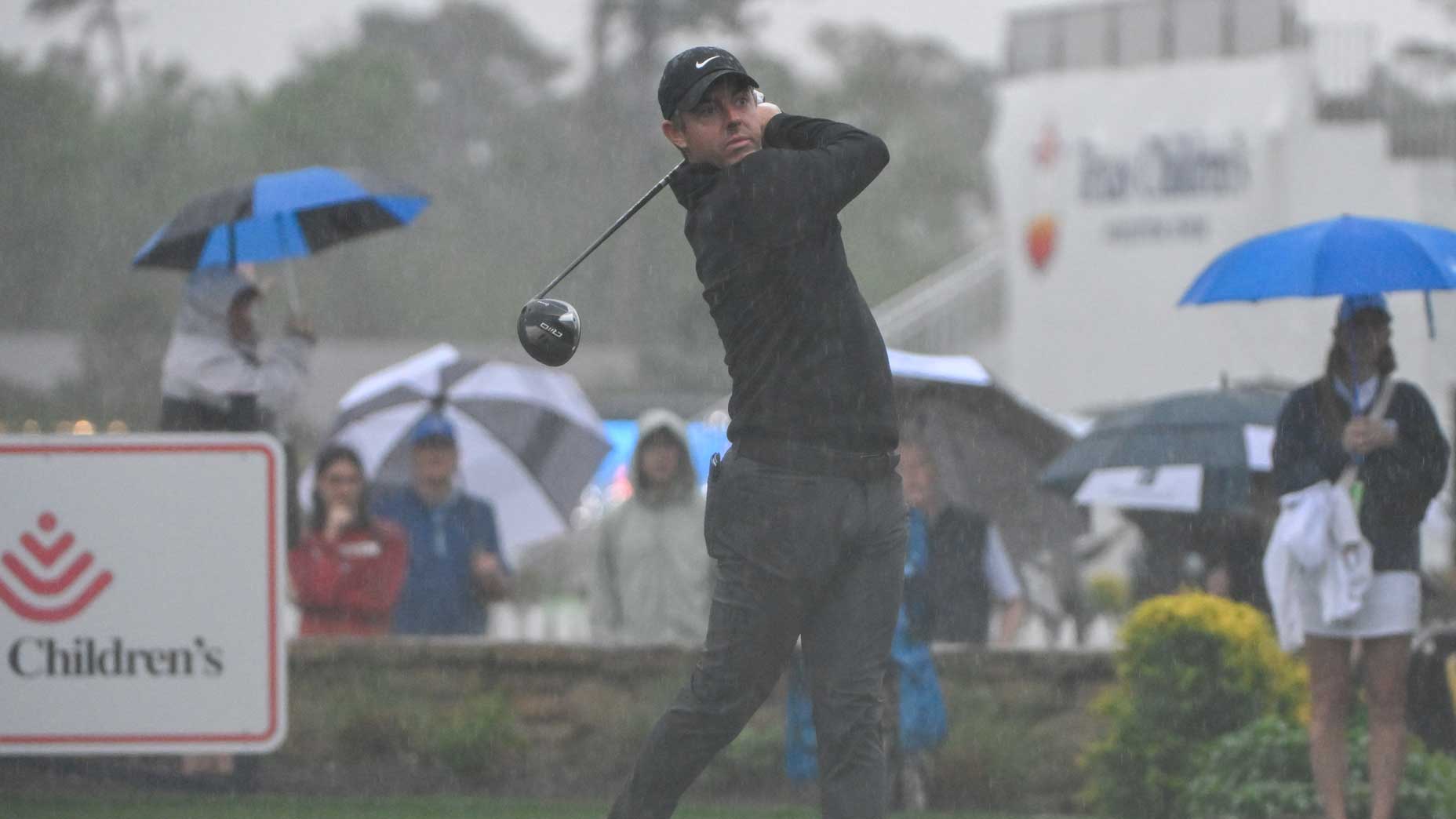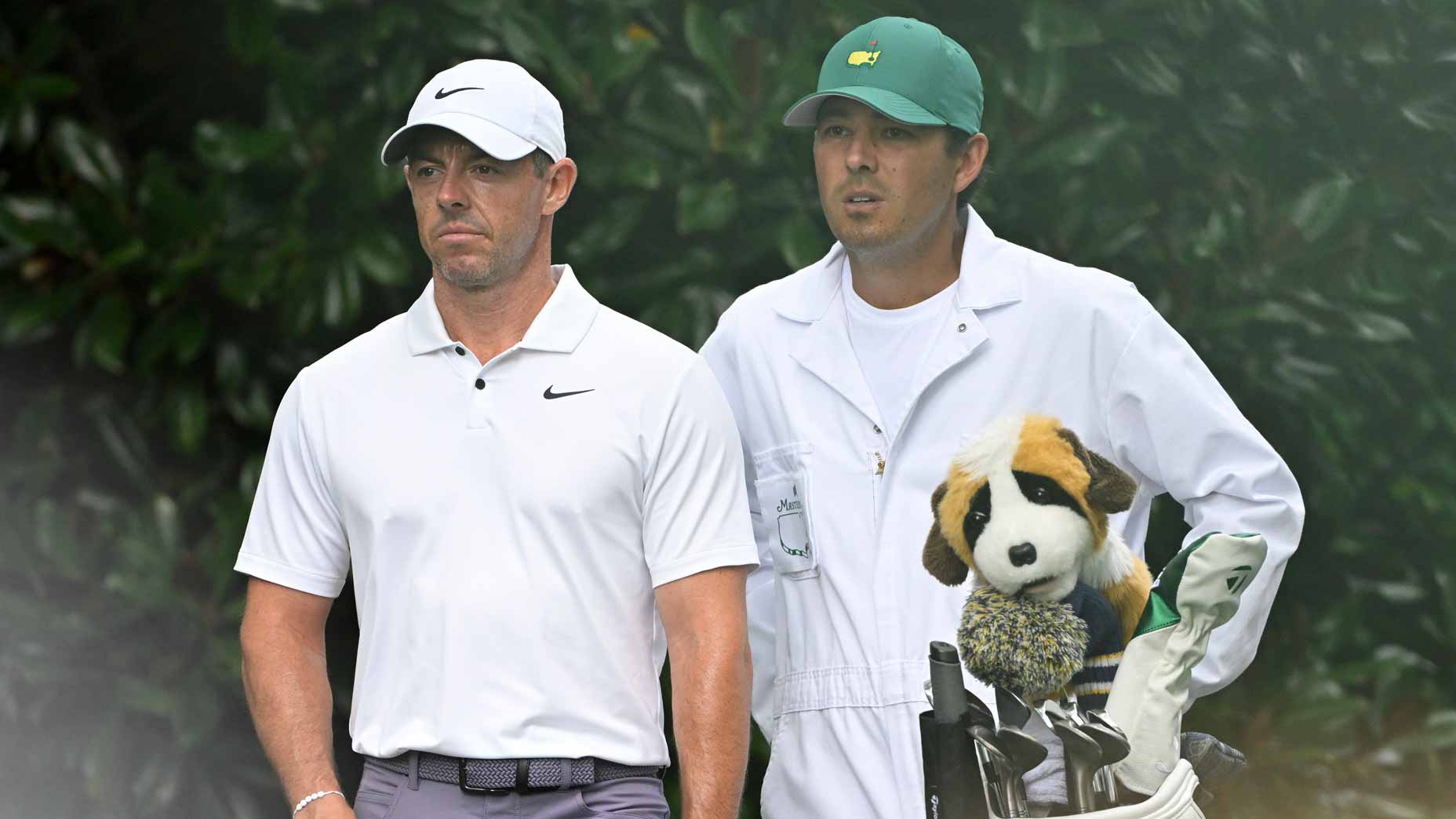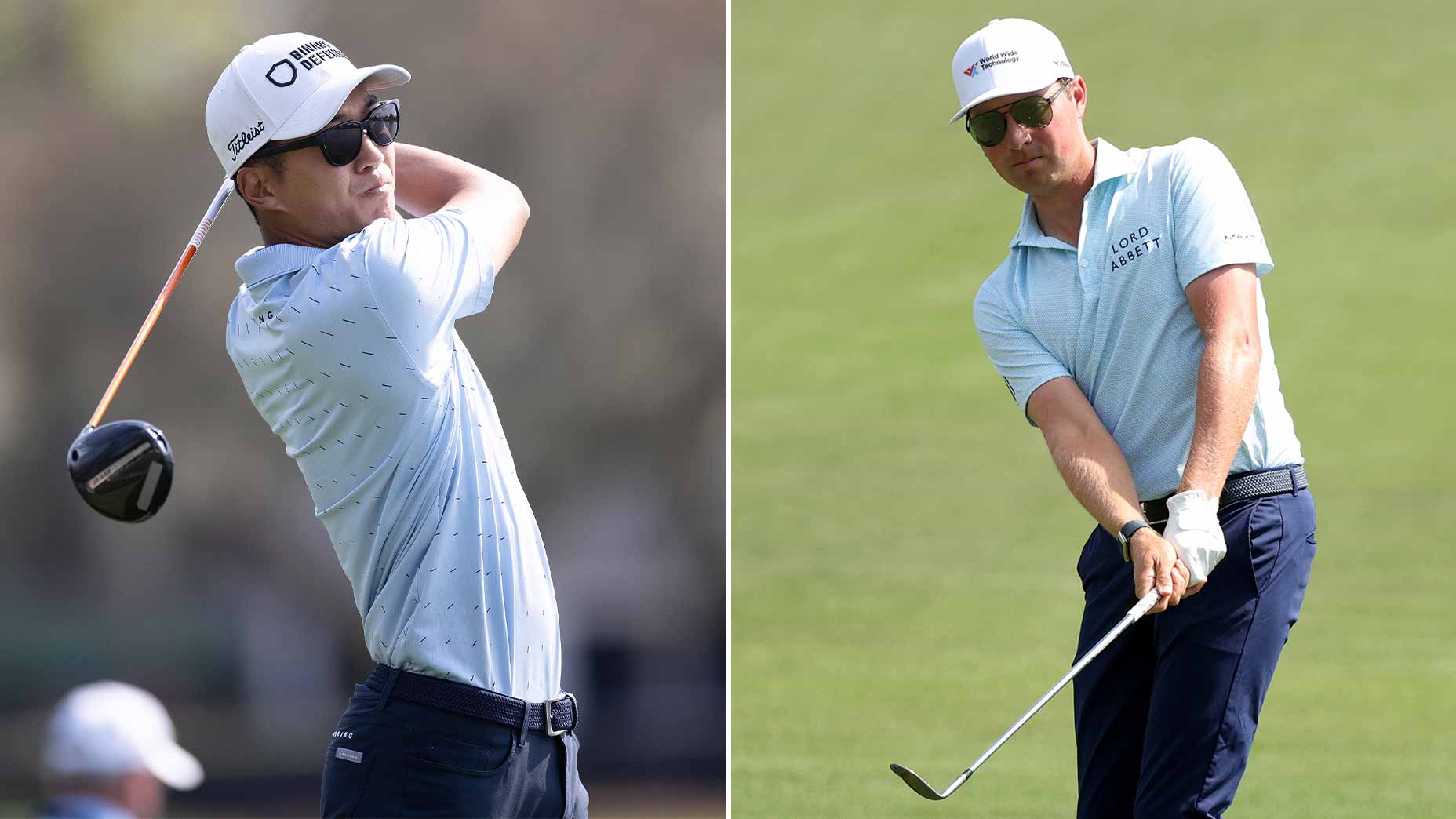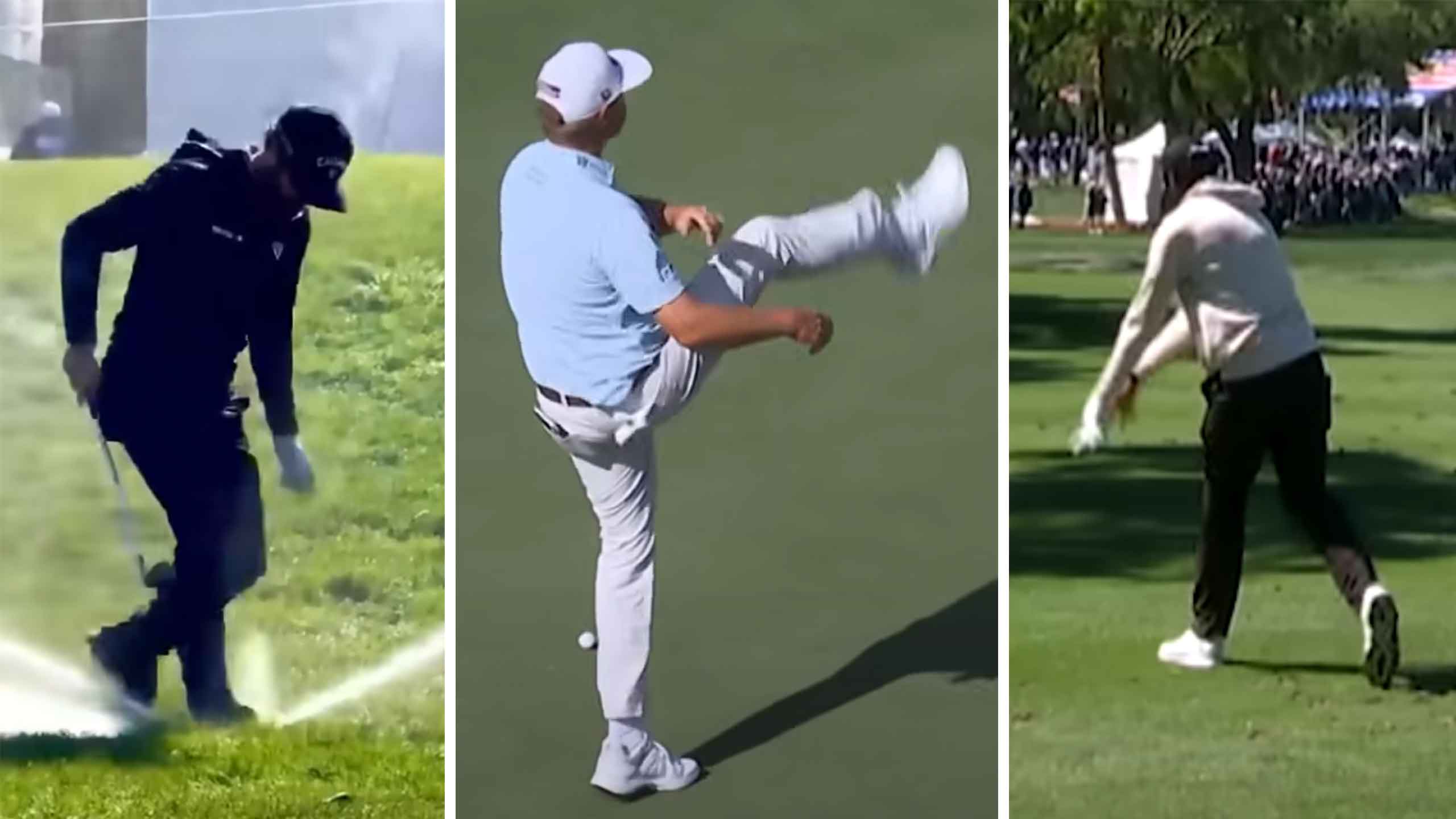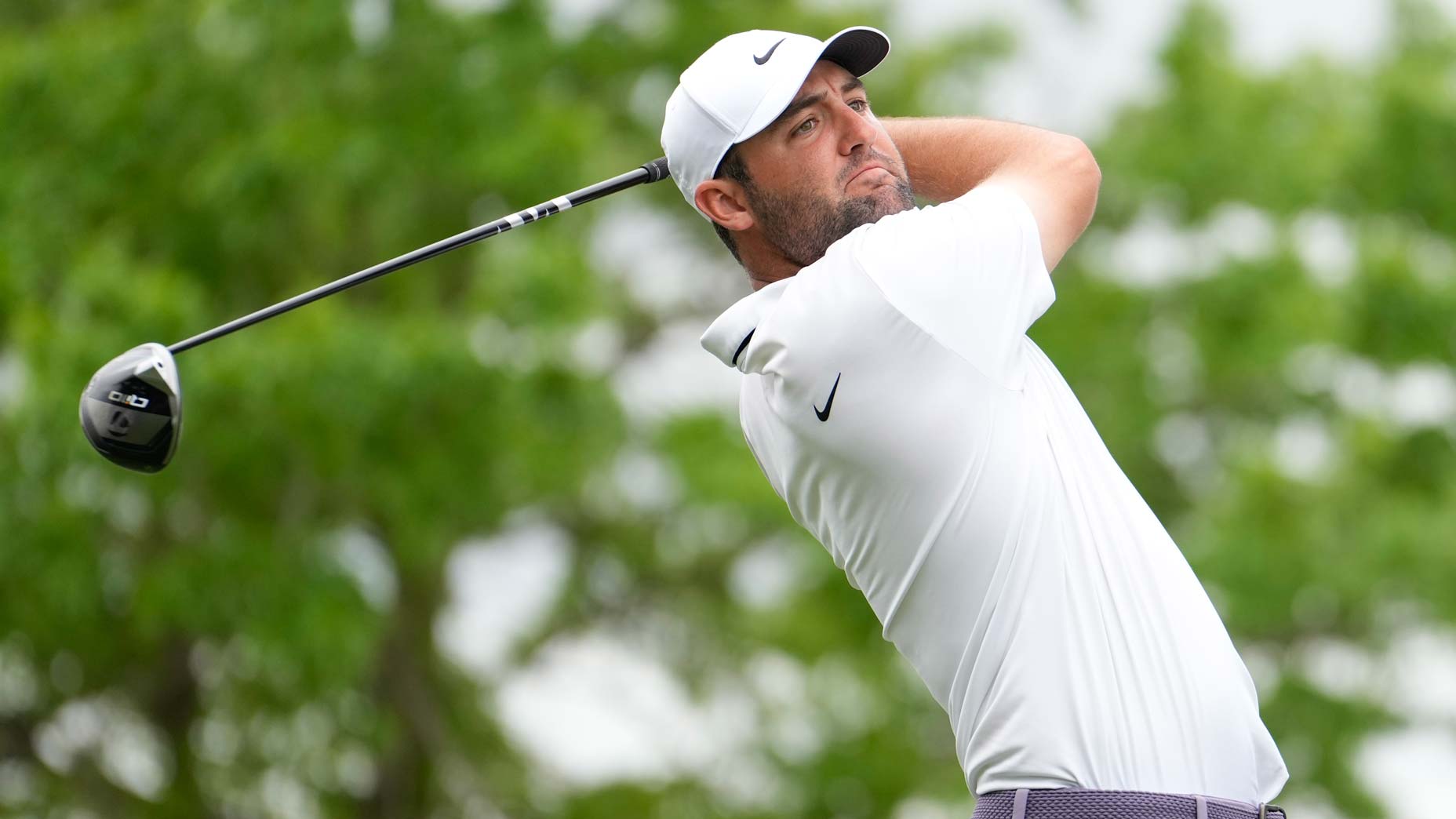In April of 1964, renowned club pro Claude Harmon appeared on the cover of Sports Illustrated, accompanied by the plea: “Let me help your game.” Two generations later, Harmon’s grandson (and, yes, he’s the son of Butch), Claude Harmon III, is extending a similar helping hand—and many of the same fundamentals.
Here’s CH III’s take on how instruction has changed over the past half-century—and how it hasn’t. More importantly, here’s how timeless basics can quickly save your swing.
BY CLAUDE HARMON III, WITH DYLAN DETHIER:
My grandfather was a golf instructor, as was my father. My three uncles—Dick, Craig and Bill—also taught at a very high level. I’m turning 50 this month, and to look back at something my grandfather did more than 50 years ago just gives you all kinds of crazy perspective. Not only was my grandfather a great teacher, he won the Masters (in 1948)—as a club professional! That’ll never happen again. So I welcome any comparisons to him and to my family.
I’m proud of my Harmon heritage, but I’ve worked hard with some of the best golfers in the world to leave my own footprint on the game. Though you’ll never catch me in a shirt quite like the one he wore on the SI cover, it’s really cool to see how my grandfather’s teachings have stood the test of time. Here’s how I still use them today with the Tour players I coach and, as my grandfather wrote 55 years ago, how they can help your game.
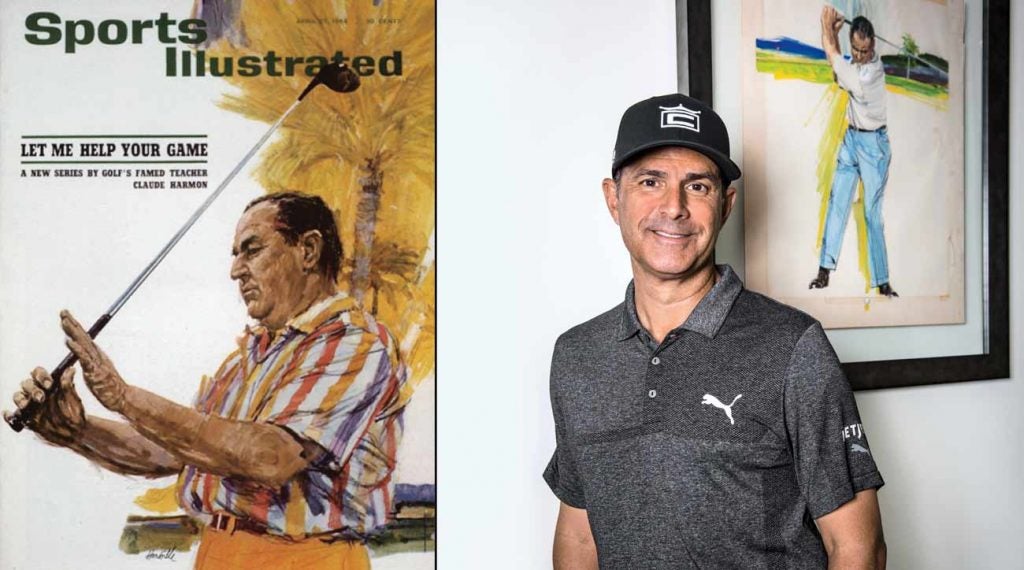
1964, SI: “The idea that you should be comfortable at the top of your backswing is hogwash.”
MY GRANDFATHER’S TAKE: The coiled spring is a vivid image that my grandfather liked to use to convey a timeless idea: the idea of loading, turning and creating tension in the backswing. The big key here is that you can’t unwind what you haven’t wound. Coil that spring, wind it up and build plenty of tension so it will want to unwind all at once.

MY PERSPECTIVE: From the top of the swing, most people are trying to fire the gun, but they haven’t even loaded it yet. That’s what my grandfather is stressing in the picture above—you have to turn to load!
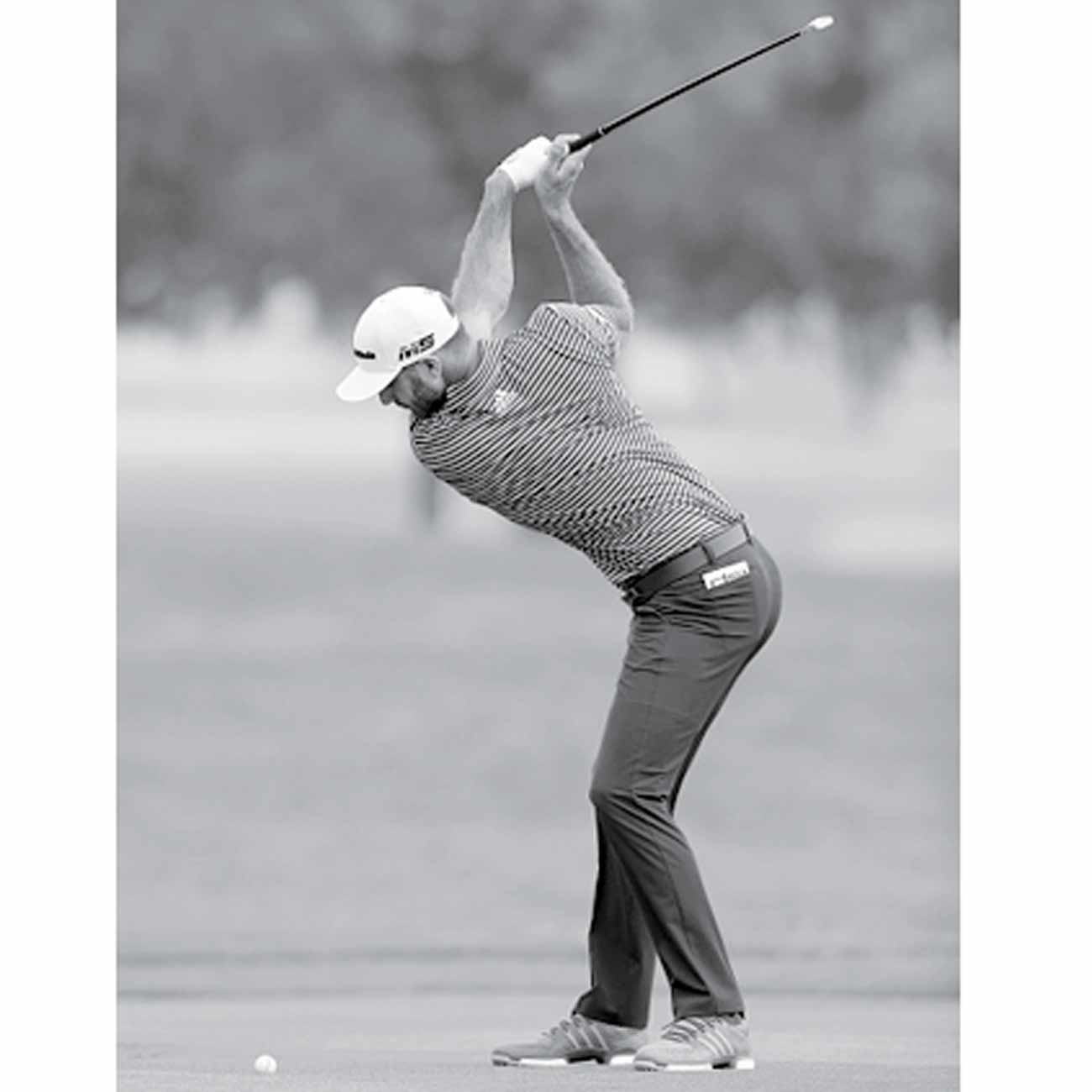
SEEN ON TOUR: HOW DUSTIN DOES IT
The best modern example of the coiled spring is what Dustin Johnson does at the top of his swing. Talk about rotation! There’s big hip turn and major shoulder turn. D.J. is super-flexible, sure, but one of the reasons he hits it so far is that he makes such a complete turn.
If you’re struggling to get distance, work on that feeling of making a longer backswing. Some people get so short with their backswing that they don’t have anything to hit through with. D.J. will never have that problem.
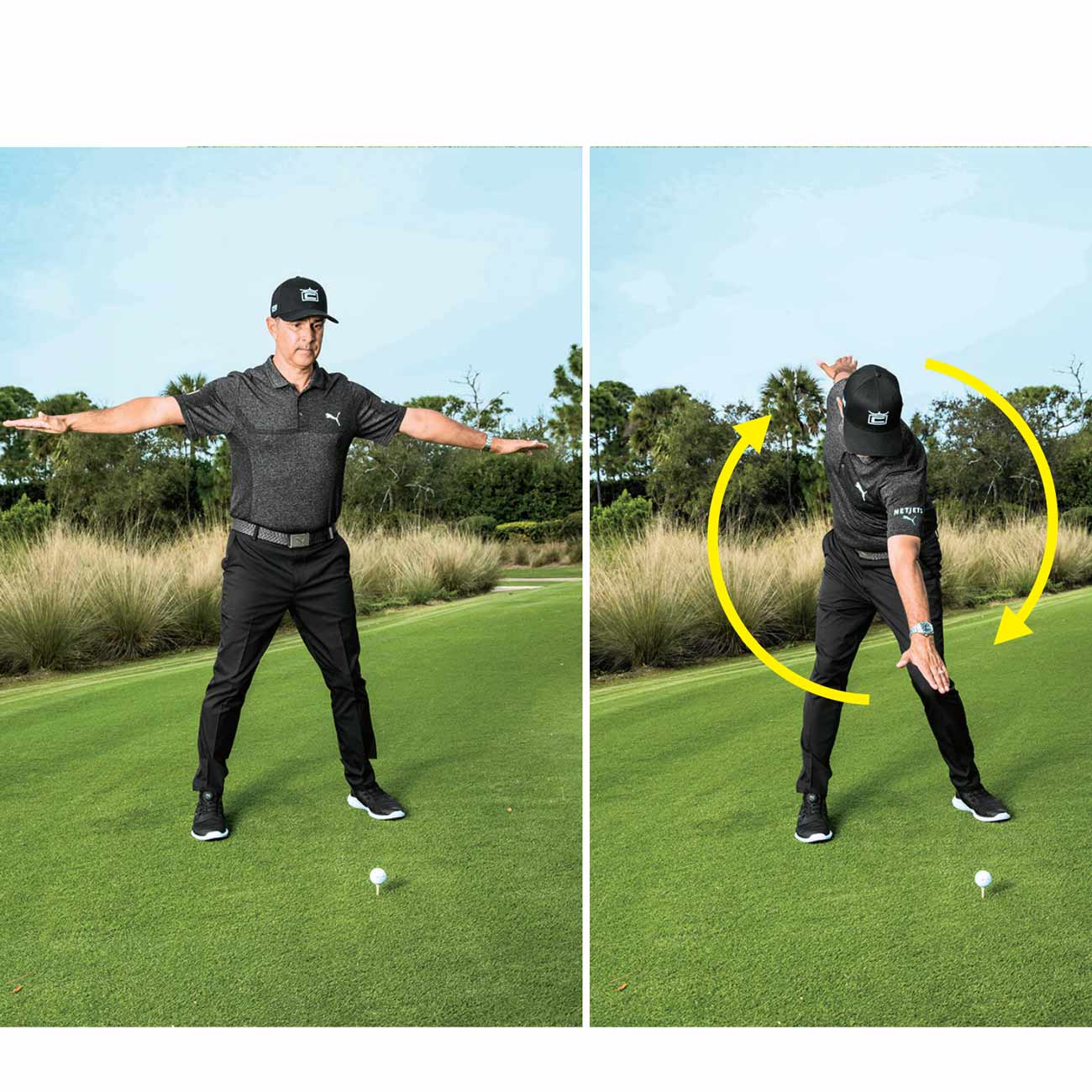
On the backswing, many amateurs tend to lift their arms and stand up straight—and right out of their posture. To correct that, I want you to be a helicopter. From your stance, stick your arms out to the sides, at shoulder-height (photo). Next, as in a regular backswing, make sure your front “rotor” is pointing toward the ground.
Feel that right hip load and that left shoulder turn, and really get into that coiled, loaded position. The helicopter image really emphasizes that feeling of turning while in your posture. You want that blade going down, not up.
1964, SI: “To swing a golf club properly, you must think of your legs and hips as an absolutely stable platform, on top of which the triangle of the upper part of the body turns.”
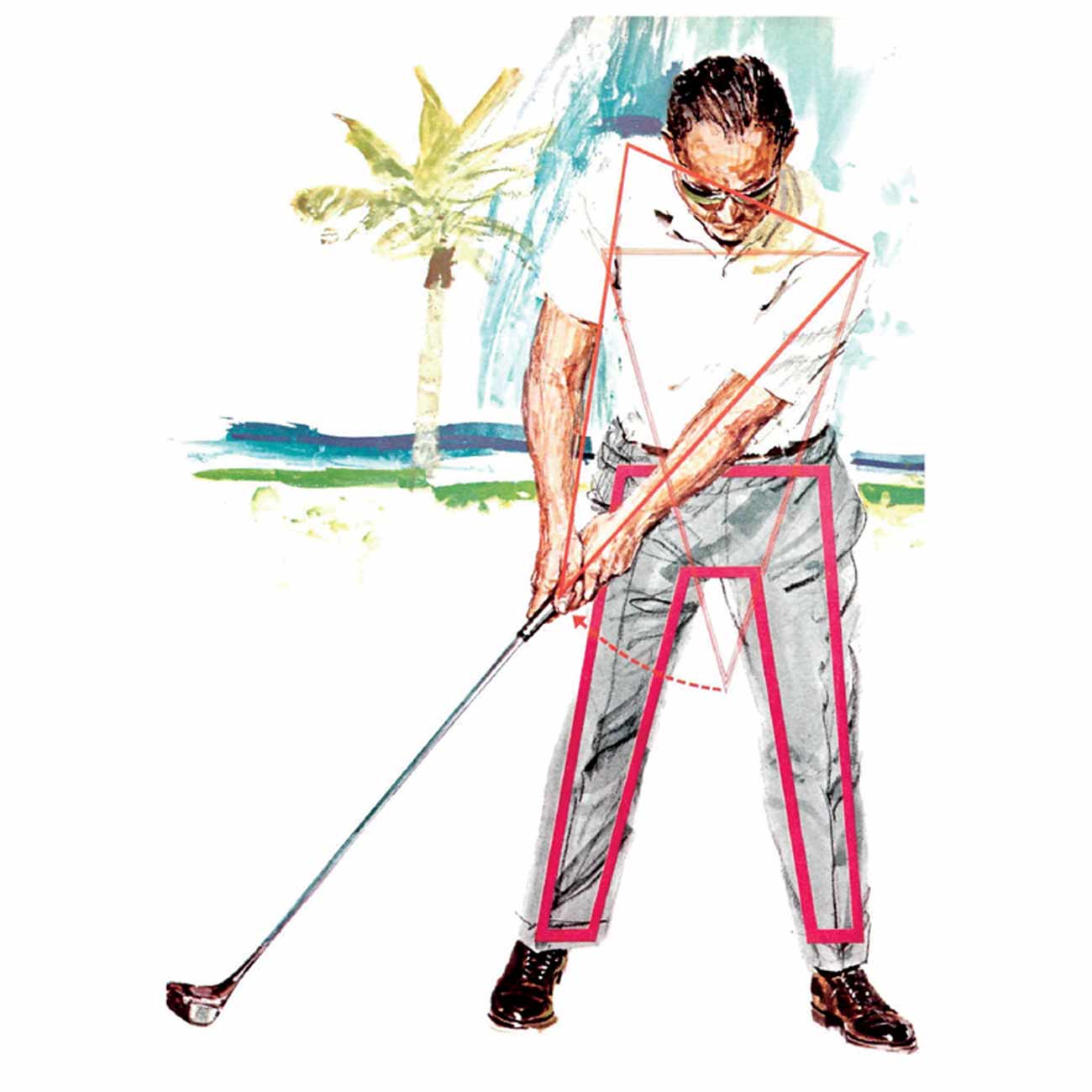
MY GRANDFATHER’S TAKE: My grandfather talked a lot about how the golf swing should feature the upper body turning around a stable lower body. Greg Norman bought in: He once told my dad that he felt like nothing at all really happened until the logo on his glove passed his thigh on the backswing. It’s another way of thinking about keeping extra movement out of the swing—you don’t want anything breaking down on your way back.
MY PERSPECTIVE: Build your platform from the ground up. Once you’ve taken a stable stance, think about building a triangle with your upper body—your left arm, right arm, and shoulders are the points of that triangle. You’re going to keep the triangle intact as you start to turn. Then you’ll restore the triangle on your downswing, just before—and through—impact. A solid platform allows you to keep that consistency as the club turns.
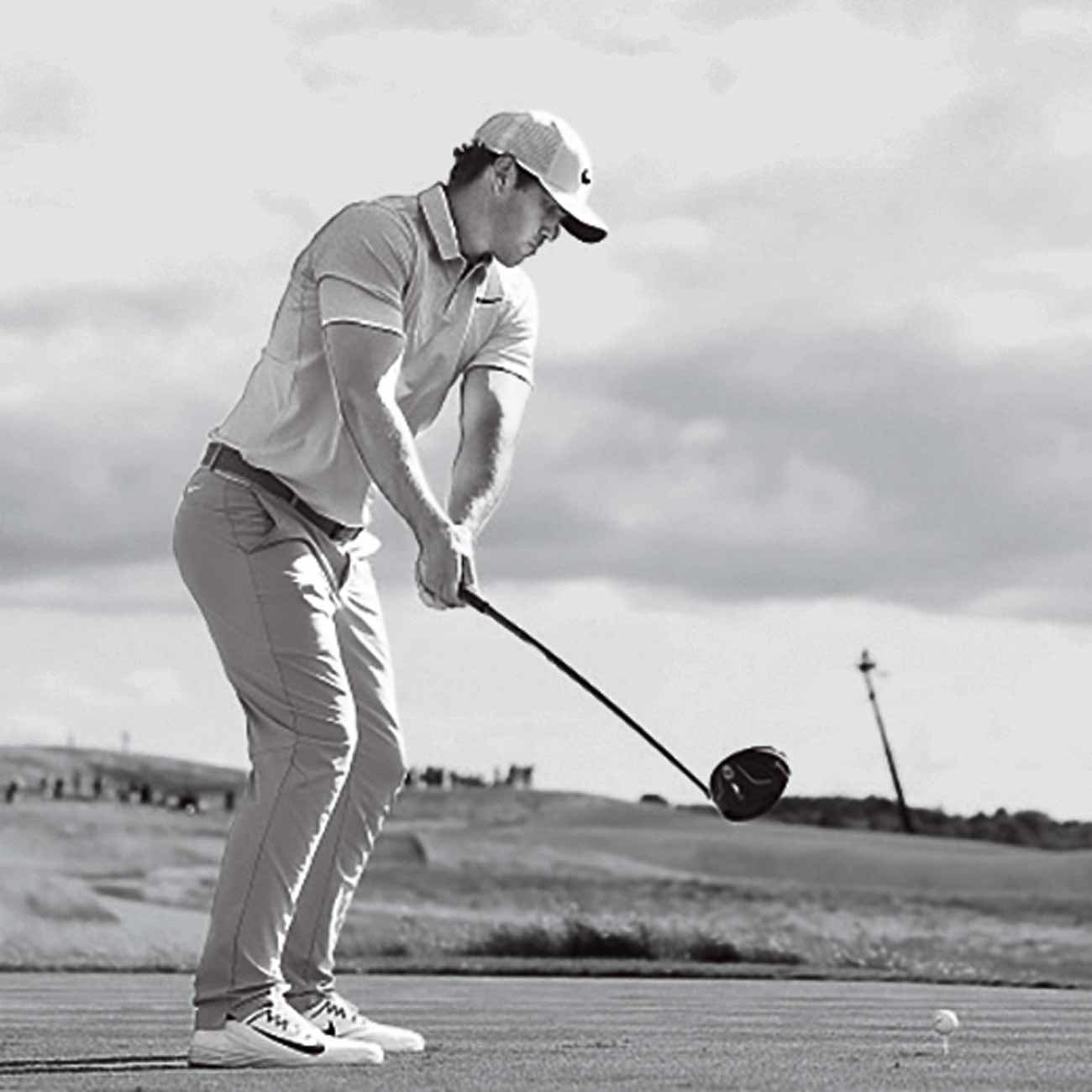
SEEN ON TOUR: HOW BROOKS DOES IT
Brooks Koepka likes to fade the ball. To do that successfully, it’s very important that he keep the clubhead outside his hands as he takes the club back. We talk about that a lot with Brooks. Most people tend to have some sort of breakdown early, and that’s the secret to the solid platform: The first move on the takeaway should feel like nothing is really happening. That’s just as true now as it was 55 years ago.
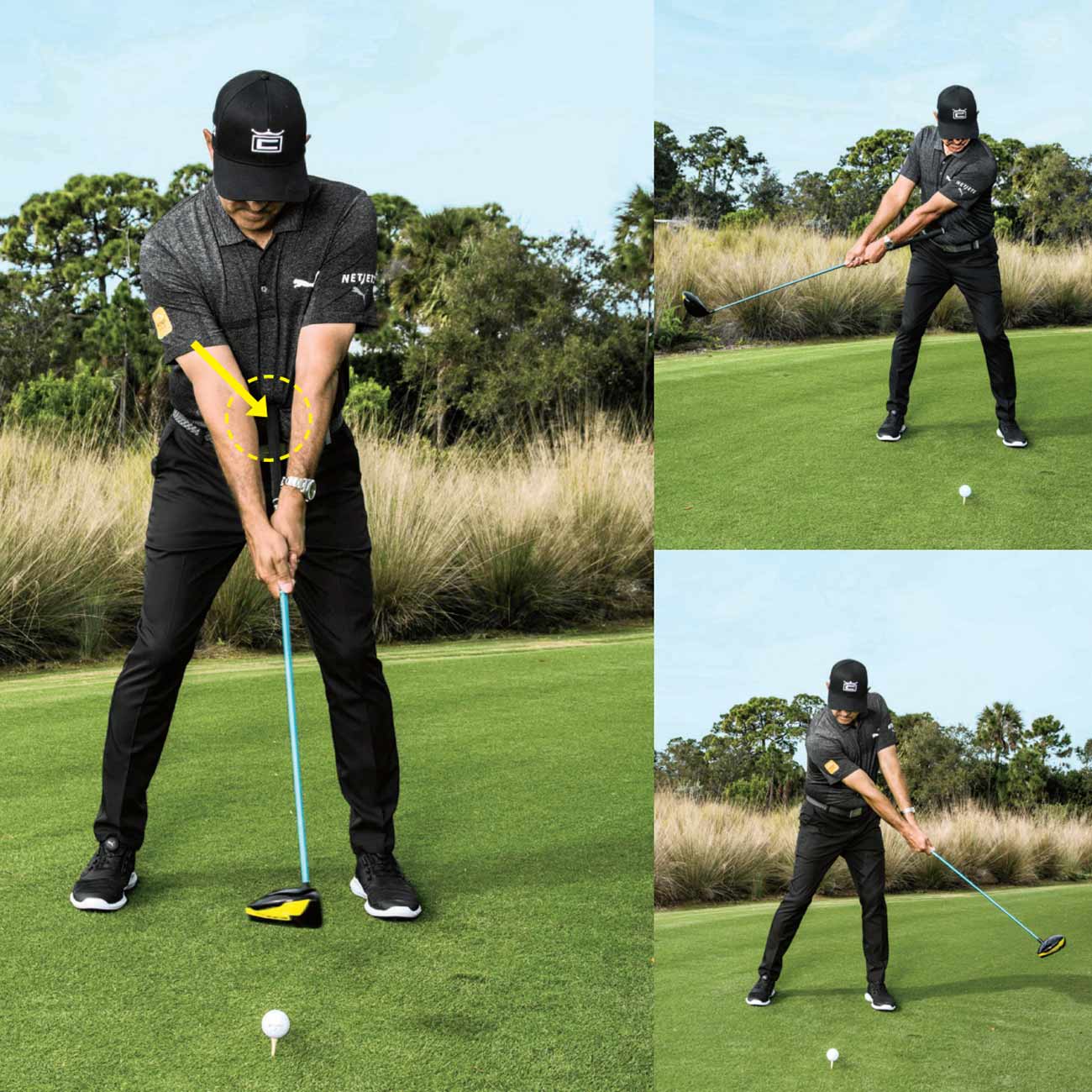
Settle into your stance, making sure to build the upper-body triangle described above. Next, choke up until the butt of the club is anchored in your stomach (photo, left). Start your backswing, rotating about 45 degrees and keeping your legs still and the grip in your gut (top right). Then go the other way, using the same rotation through impact and 45 degrees beyond (bottom right). What you’re feeling is the stable-stance swing my grandfather preached 55 years ago.
1964, SI: “The proper way to initiate the downswing is with the hips. Once you try it, you’ll be surprised how easy it is.”
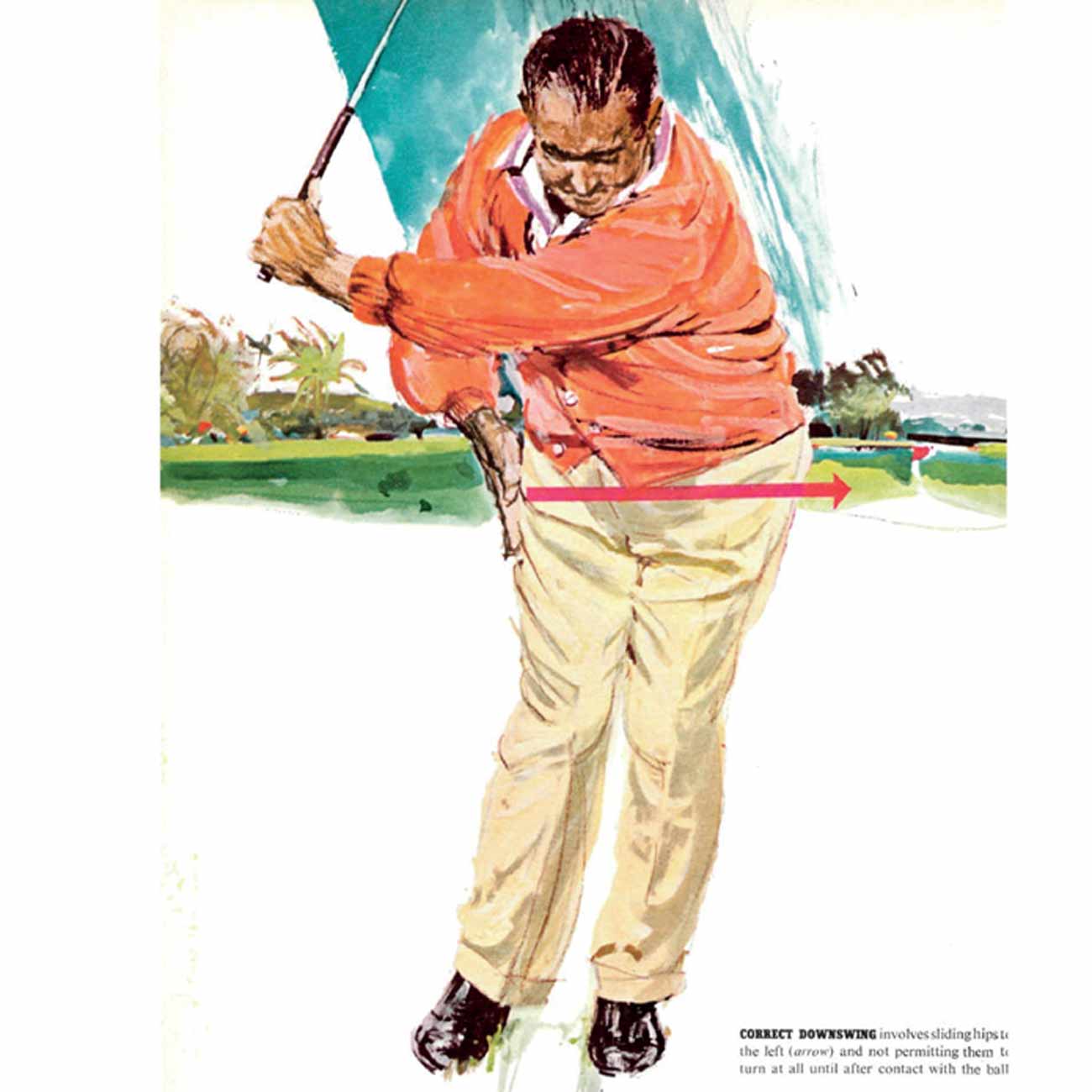
MY GRANDFATHER’S TAKE: My grandfather thought there should be a lot of lateral hip movement. But the key point he was hitting on—and he was ahead of his time on this—was how important it is to shift your weight forward. I’m always impressed that he figured that out the way he did without any of the technology we have now.
MY PERSPECTIVE: Modern pros get to the top of their swing and then to their left side very early. The average golfer does the opposite. The average golfer shifts back and stays back—and then slices the ball. My grandfather wanted golfers to have the feeling that at the top of their swing their hips were sliding forward. In fact, he used to tell my dad and his brothers that on the downswing, your hips should slide toward the target anywhere from 10 to 14 inches.
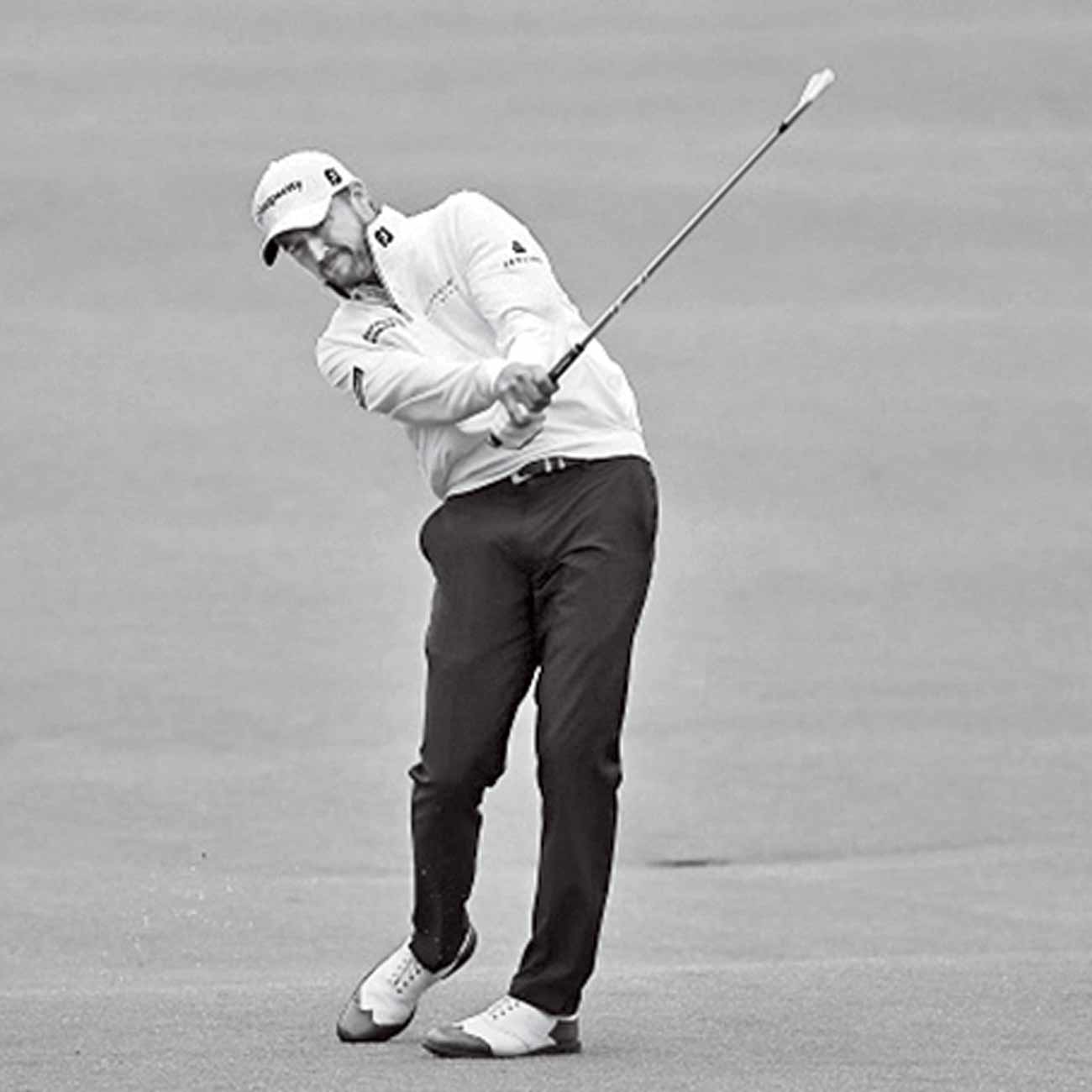
SEEN ON TOUR: HOW JIMMY DOES IT
Jimmy Walker has a big, powerful swing. We know that his weight shift and that movement to the left side are what allow him to shallow out the club, because today we can take players like Jimmy and put them on force plates or body trackers and see exactly how much weight is on the left versus the right at any point in their motion. My grandfather could only figure out the same thing using his sense of feel, but now we know for sure: All good players move hard to their left side.
This one’s simple: Stick a pole in the ground in front of your left leg. As you begin your downswing, test that your weight really is shifting forward by giving the pole a little bump with your left hip. There should be a turn here, too, but that feeling of getting from your right to your left side is timeless.
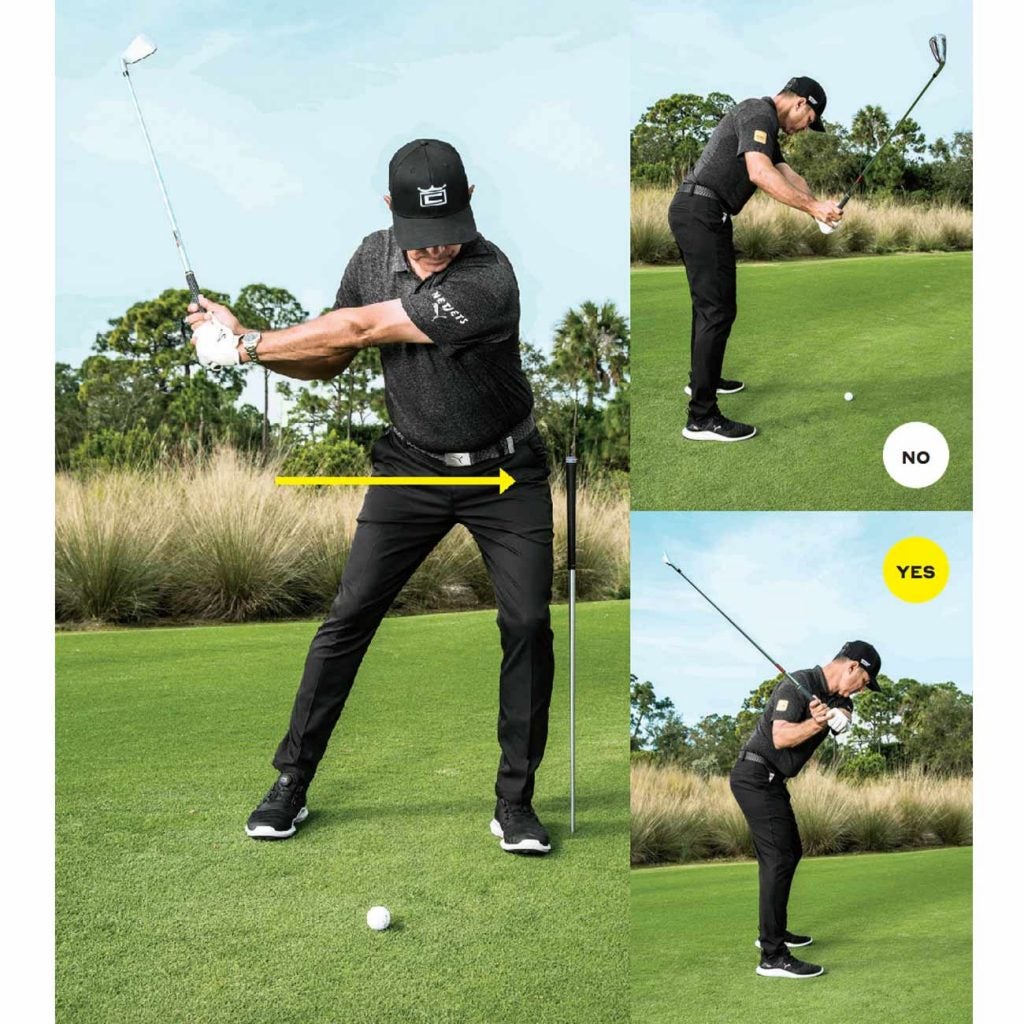
1964, SI: “As far as the movement of the clubhead goes, putting is the same basic stroke as the drive.”
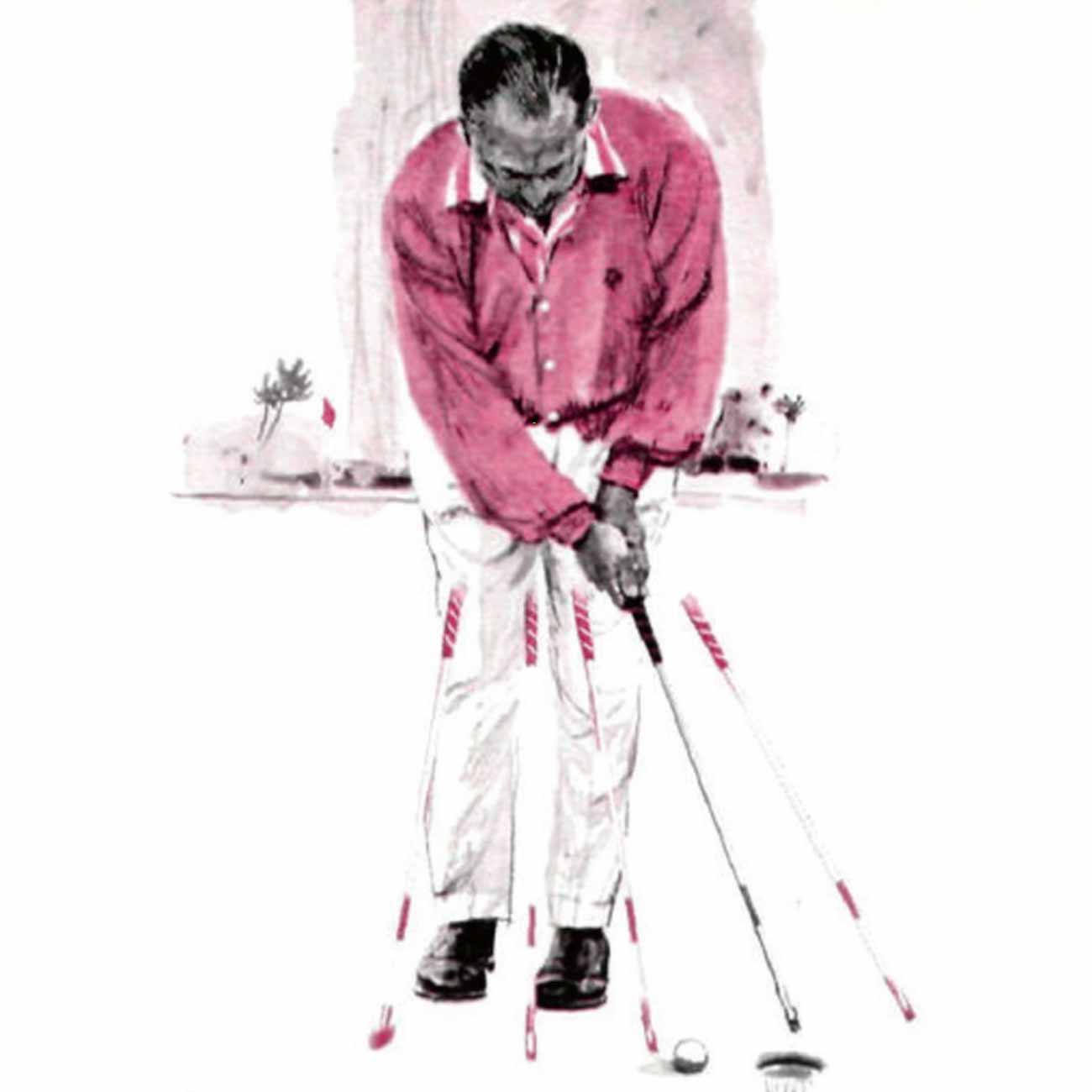
MY GRANDFATHER’S TAKE: My grandfather always called putting an “individual activity,” but one thing was universal: Golfers must let the putterhead release. Most didn’t release it back then, however, and most still don’t now; they’re afraid to. As they take the putter back, they’re trying to stay so controlled that they get stiff and locked—and end up loading nothing. That just leads to blocks.
MY PERSPECTIVE: If you look at most great putters, there’s a lot of loading and unloading, just as there is in the full swing. In the SI image above, notice how far my grandfather’s putterhead travels compared to his hands! With poor putters, the hands often go back a long way without really loading anything. In good putting strokes, the hands don’t travel very far at all.
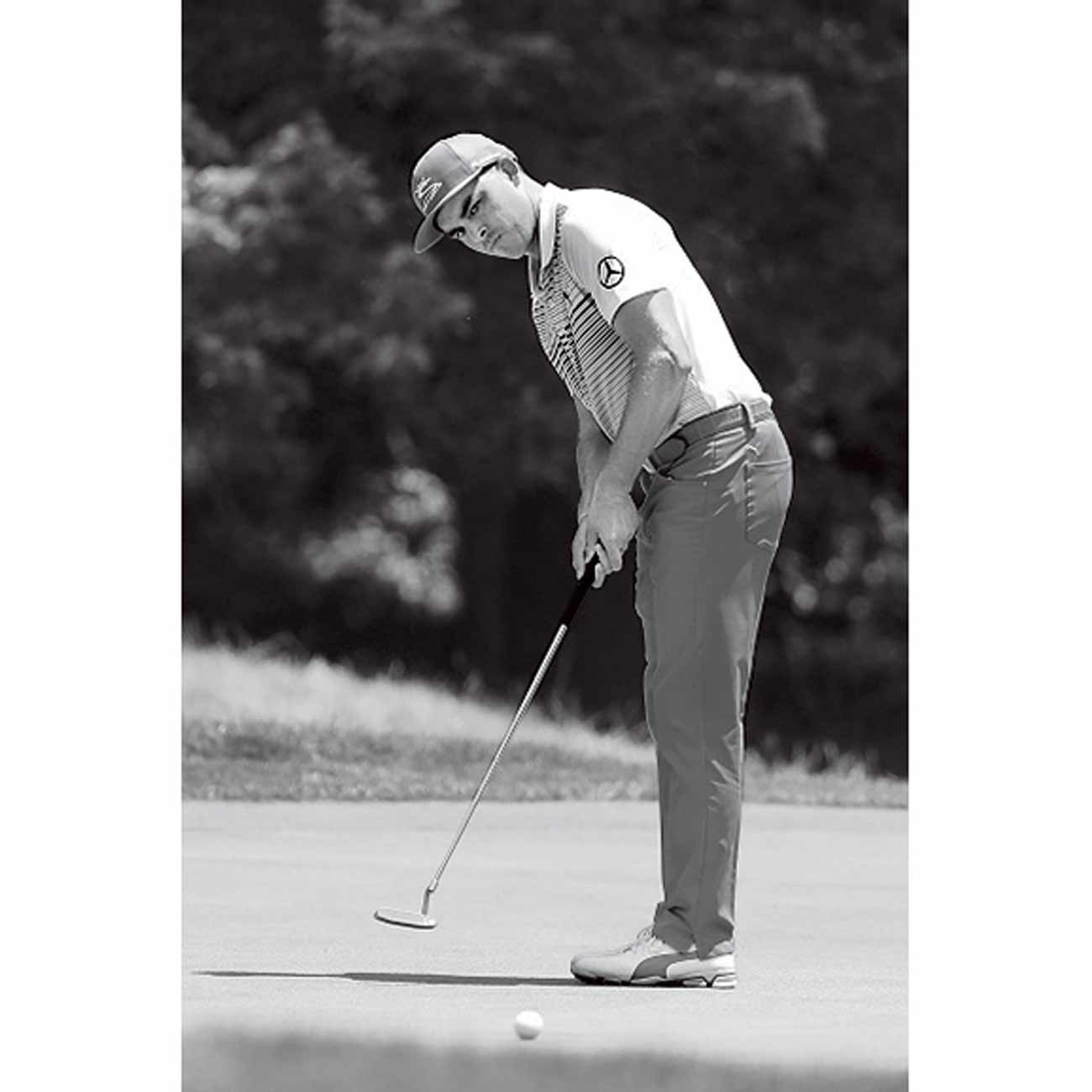
SEEN ON TOUR: HOW RICKIE DOES IT
Sure, there are a lot of differences now. My grandfather putted on much slower greens, so there was an extra emphasis on release. But Rickie Fowler is one of the best putters on the planet, and he still putts very much the same way. His hands don’t travel very far. That’s basically what my grandfather taught.
Ben Crenshaw told me something valuable years ago: You need to putt with the putterhead, not the grip. Most people, in my opinion, putt too much with the grip. Take a look at Rickie. He putts with a very narrow stance and really lets the head of the putter swing, which translates to a lot of release in his stroke.
A lot of people are very stiff-armed and stiff-wristed when they putt, usually because they’re afraid to manipulate anything. This drill is something that my dad used to have Tiger do to combat that. First, put your left thumb on top of the grip and hook it. Then pull the top of the grip forward, helping swing the club back. That’s the sort of load you want to feel, and it will let your putterhead fire through impact.

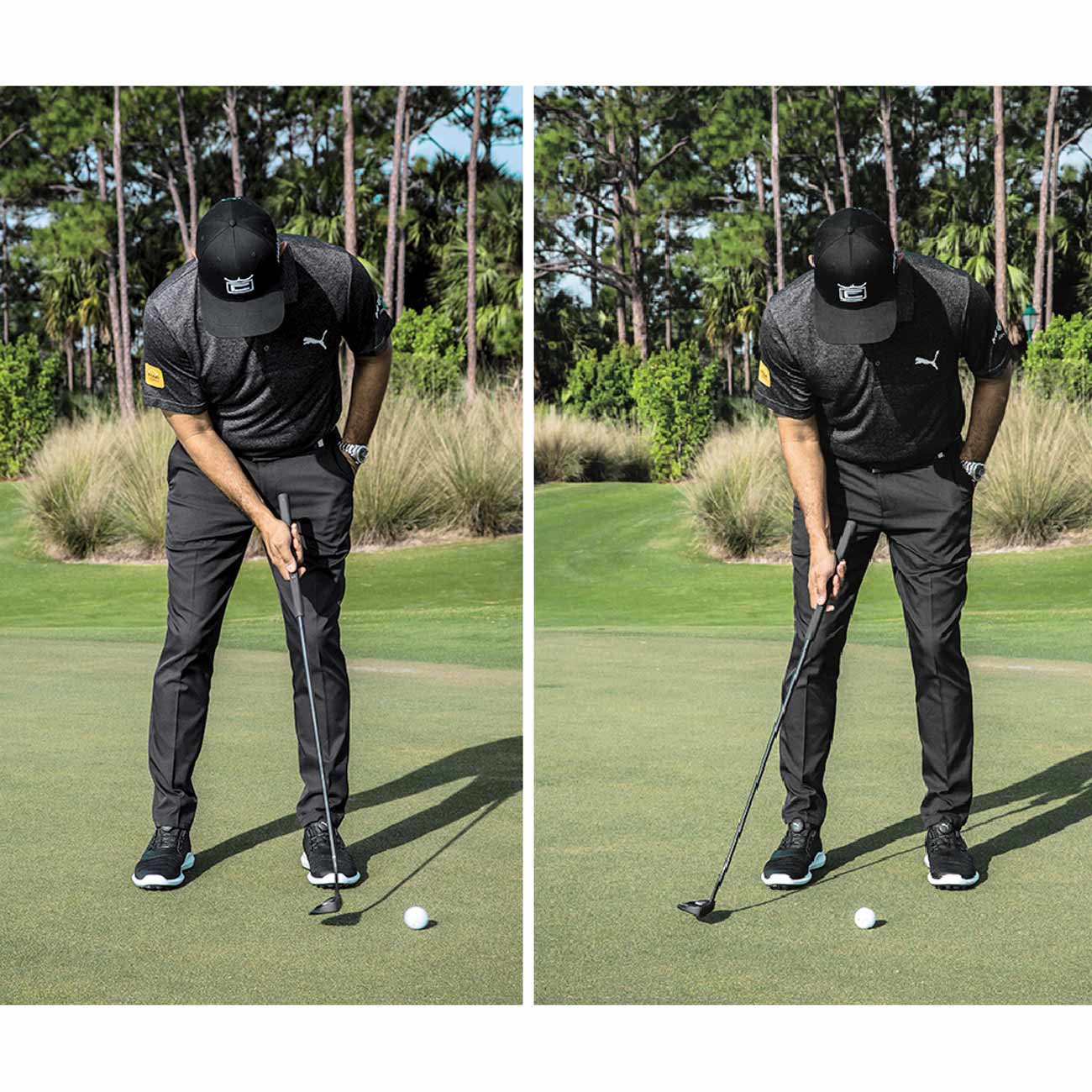
To get that same feeling when you’re warming up, try putting one-handed (photos). That’s why Tiger still often practices his putting one-handed —and why he, too, always talks about release.



